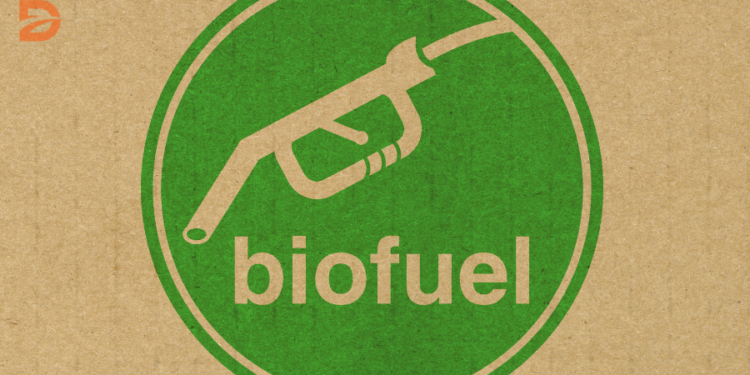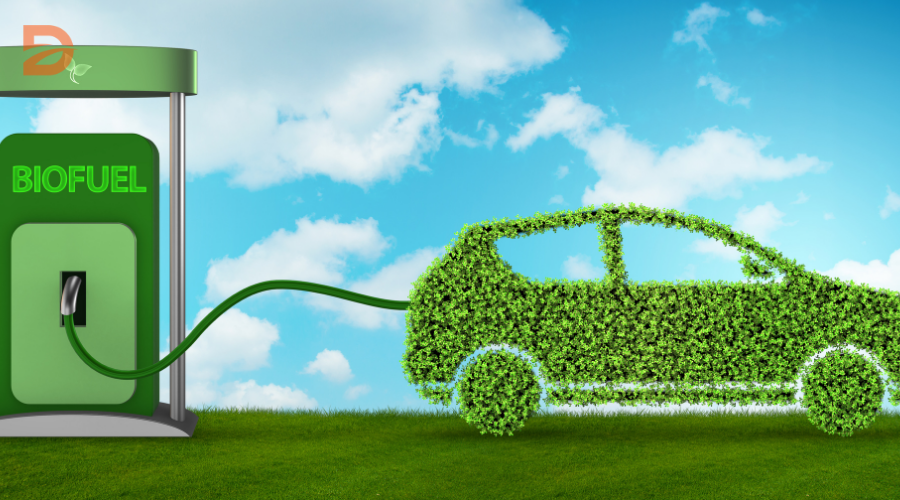Over 280 million internal-combustion engine (ICE) cars and trucks currently roam the roads of the United States, and it’s estimated that electric vehicles won’t reach even 50% of new-vehicle sales for more than a decade. This startling statistic highlights the pressing need for sustainable solutions to decarbonize the transportation sector beyond just transitioning to electric vehicles.
Biofuels, such as ethanol and biodiesel, have emerged as a promising alternative, with the potential to reduce greenhouse gas emissions from existing combustion-engine vehicles. However, the viability and environmental impact of biofuels has been the subject of ongoing debate. In this article, we’ll delve into the world of biofuels, examining their benefits, drawbacks, and the latest advancements in renewable hydrocarbon “drop-in” fuels that could offer a more sustainable path forward.
Key Takeaways
- Biofuels are energy sources created from organic matter, such as corn, soybeans, wood, and animal waste.
- While biofuels may seem like a greener alternative to fossil fuels, they still emit climate-damaging pollution when burned and are not a viable climate solution at scale.
- Most vehicles in the U.S. are designed to run on biofuel blends, with most gasoline containing at least 10% ethanol.
- Synthetic fuels, such as fuels, offer a more sustainable solution by utilizing renewable energy sources and reducing carbon emissions.
- The adoption of renewable hydrocarbon “drop-in” fuels could play a significant role in decarbonizing the transportation sector, particularly for existing combustion-engine vehicles.
What Are Biofuels?
Biofuels are liquid fuels produced from renewable biological sources, such as plants and algae. These sustainable energy alternatives have gained significant attention as a potential solution to reduce reliance on fossil fuels and mitigate environmental concerns. Two of the most prominent biofuels are ethanol and biodiesel.
Ethanol
Ethanol is a renewable fuel made from various plant materials, with the most common source being corn starch in the United States. This clean-burning alcohol is used as a blending agent with gasoline to increase octane and reduce emissions. In 2022, ethanol accounted for 82% of U.S. biofuel production and 75% of consumption, making it the predominant biofuel in the country.
Biodiesel
Biodiesel, on the other hand, is a liquid fuel produced from renewable sources such as new and used vegetable oils and animal fats. It is a cleaner-burning replacement for petroleum-based diesel fuel and held the second-largest share of biofuel production at 9% and consumption at 9% in the U.S. in 2022.
Both ethanol and biodiesel can be blended with their respective fossil fuel counterparts in varying percentages, allowing for a gradual transition towards more sustainable transportation options.
| Biofuel | Production (Billion Gallons) | Consumption (Billion Gallons) | Share of Total Biofuel (%) |
|---|---|---|---|
| Ethanol | 15.4 | 13.2 | 82% |
| Biodiesel | 1.7 | 1.6 | 9% |
| Renewable Diesel | 1.5 | 1.6 | 8% |
| Other Biofuels | 0.1 | 0.2 | 1% |
| Total | 18.7 | 17.6 | 100% |
Biofuels, Synthetic Fuels and the Environment
The environmental impact of biofuels is a complex and often debated topic. While biofuels are often touted as a cleaner alternative to traditional fossil fuels, some studies have raised concerns about their environmental footprint. One source suggests that biofuels can emit climate-damaging pollution when burned and may contribute to the clearing of natural carbon sinks like forests and grasslands, resulting in the release of stored carbon into the atmosphere.
Additionally, the increased demand for crops like corn and soybeans used in biofuel production can drive up food prices and worsen air pollution, particularly in low-income and minority communities already burdened by industrial facilities. However, other research indicates that ethanol-blended gasoline and biodiesel blends can produce lower emissions than their fossil fuel counterparts.
Synthetic fuels, on the other hand, are produced artificially from raw materials such as coal, oil shale, or crop residues. Coal is the primary raw material used in synthesizing synthetic fuels, but the conversion process can result in the loss of one-third to two-fifths of the fuel content. The liquefaction and gasification of coal also require substantial inputs of water.
| Fuel Type | Emission Reduction Potential | Infrastructure Readiness |
|---|---|---|
| Biofuels | Up to 80% compared to fossil fuels | Existing infrastructure is ready to support the implementation of sustainable fuels on a larger scale |
| Synthetic Fuels | Up to 80% compared to fossil fuels | Existing infrastructure is ready to support the implementation of sustainable fuels on a larger scale |
To address environmental concerns, the European Union has set ambitious targets for the use of sustainable aviation fuels, aiming for a share of at least 5% in 2030 and 63% in 2050. Guidelines for the reduction in the greenhouse gas content of energy supplied to ships also include at least a 6% reduction in 2030 and a 75% reduction in 2050.
As the debate over the environmental impact of biofuels and synthetic fuels continues, it is clear that a balanced and evidence-based approach is needed to ensure that these fuels can play a meaningful role in reducing emissions and mitigating climate change.
Renewable Hydrocarbon “Drop-In” Fuels
As the world increasingly seeks to reduce its reliance on fossil fuels, renewable hydrocarbon fuels have emerged as a promising alternative. These biofuels, derived from biomass sources, are designed to be “drop-in” compatible, meaning they can seamlessly replace traditional petroleum-based fuels in existing engines, pumps, and infrastructure.
Renewable hydrocarbon fuels can be produced through a variety of biological and thermochemical conversion processes, including pyrolysis, gasification, and hydrothermal liquefaction, as well as enzymatic and chemical upgrading of intermediate products. This flexibility allows for the production of multiple products from various feedstocks and technologies, contributing to the potential for increased energy security and reduced greenhouse gas emissions.
One key benefit of renewable hydrocarbon fuels is their chemical similarity to their petroleum-based counterparts. They meet the ASTM D4814 specification, ensuring compatibility with existing engines and infrastructure. This compatibility is a significant advantage, as it eliminates the need for costly modifications or the development of specialized vehicles and distribution networks.
Despite these advantages, the commercial use of renewable gasoline in the United States has been limited, primarily due to the emphasis on the electrification of the light-duty market. However, the flexibility and potential benefits of these drop-in fuels continue to drive research and development in this field, making them a promising solution for a more sustainable transportation future.
| Feedstock | Hydrogen Requirement |
|---|---|
| Sugar | Considerable hydrogen input is required due to the high oxygen content |
| Lignocellulose | Considerable hydrogen input is required due to the high oxygen content |
| Lipids | Lower hydrogen requirement compared to sugar and lignocellulose |
The production of renewable hydrocarbon fuels faces challenges in reducing the high oxygen content of the feedstocks to meet the properties of petroleum-based transportation fuels. Processes like hydrodeoxygenation (HDO) and decarboxylation/decarbonylation (DCO) are used to remove oxygen, with HDO being the preferred method due to its higher product yield.
As the quest for cleaner and more sustainable transportation solutions continues, renewable hydrocarbon “drop-in” fuels remain a promising avenue, offering the potential for reduced greenhouse gas emissions, increased energy security, and seamless integration with existing infrastructure.
Biofuel Production Processes
Biofuel production is a complex process that involves two crucial steps: deconstruction and upgrading. Deconstruction is the initial stage where the rigid structure of plant cell walls, containing cellulose, hemicellulose, and lignin, is broken down. This can be achieved through high-temperature processes like pyrolysis, gasification, and hydrothermal liquefaction, or low-temperature biological and chemical processes like hydrolysis.
Deconstruction
The deconstruction phase is essential for unlocking the energy-rich compounds within the biomass. This step can be carried out using a variety of methods, each with its own advantages and drawbacks. High-temperature processes like pyrolysis, gasification, and hydrothermal liquefaction can efficiently break down the plant material, but they often require significant energy inputs. In contrast, low-temperature biological and chemical processes, such as hydrolysis, can be more energy-efficient, but they may be slower and less effective.
Upgrading
Once the biomass has been deconstructed, the next step is upgrading. This involves further processing the intermediate products, such as crude bio-oils, syngas, and sugars, either biologically through fermentation or chemically, to produce the final biofuel products. The upgrading step is crucial for transforming the raw materials into usable fuels that can be blended with traditional petroleum-based fuels or used as standalone alternatives.
Biofuel production is a rapidly evolving field, with researchers and engineers continuously exploring new and innovative ways to improve the efficiency and sustainability of these processes. By leveraging the latest advancements in deconstruction and upgrading technologies, the biofuel industry is poised to play a vital role in the transition towards a more environmentally conscious and energy-secure future.
| Deconstruction Method | Description | Advantages | Disadvantages |
|---|---|---|---|
| Pyrolysis | Thermal decomposition of biomass in the absence of oxygen | Efficient breakdown of plant material can produce a variety of fuel products | High energy input requirements, the potential for emissions |
| Gasification | Conversion of biomass into synthesis gas (syngas) through partial oxidation | Versatile, can produce a range of fuels and chemicals | The complex process requires careful control of operating conditions |
| Hydrothermal Liquefaction | Conversion of biomass into bio-oil under high temperature and pressure in the presence of water | Can process wet biomass, high energy efficiency | Expensive equipment, potential for corrosion issues |
| Hydrolysis | Breaking down of cellulose and hemicellulose into sugars using enzymes or acids | Energy-efficient, can utilize a variety of feedstocks | The slower process is less effective for certain types of biomass |
Conclusion
The exploration of biofuels and synthetic fuels has revealed both their potential and their challenges in addressing the pressing issues of climate change and environmental impact. While biofuels have shown promise in reducing carbon emissions compared to traditional fossil fuels, concerns have been raised about their overall sustainability and the potential for unintended consequences, such as food insecurity and deforestation.
Synthetic fuels, on the other hand, offer a more diverse and potentially cleaner alternative, with a range of options from biomass-derived to power-to-liquid and solar-based fuels. As the industry continues to invest in research and development, the future trend suggests a growing role for renewable fuels in decarbonizing various sectors, including transportation, aviation, and industrial applications.
However, challenges such as feedstock availability, production scalability, and cost competitiveness must be addressed to maximize the potential of these alternative fuel sources. Ongoing collaboration between policymakers, industry leaders, and researchers will be crucial in driving the necessary advancements and ensuring a sustainable transition toward a cleaner energy future.
FAQ
What are biofuels?
Biofuels are energy sources created from organic matter such as corn, soybeans, wood, sewage sludge, landfill garbage and gas, and animal waste. These can include fuels like ethanol, biodiesel, and renewable natural gas.
How are biofuels produced?
Biofuel production involves two main steps: deconstruction and upgrading. Deconstruction breaks down the rigid structure of plant cell walls while upgrading further processes the intermediate products through fermentation, chemical processes, or other methods to produce the final biofuel.
What are the environmental impacts of biofuels?
There are concerns that biofuels can emit climate-damaging pollution when burned and lead to the clearing of natural carbon sinks like forests and grasslands. However, some biofuel blends may produce lower emissions than their fossil fuel counterparts.
What are renewable hydrocarbon “drop-in” fuels?
Renewable hydrocarbon fuels derived from biomass sources are nearly identical to petroleum-based fuels, making them compatible with existing engines, pumps, and infrastructure. These can be produced through various biological and thermochemical processes.
Are biofuels a viable solution for addressing climate change?
There are differing views on this. Some argue that biofuels are not a viable climate solution at scale, while others highlight the potential benefits of biofuel blends in reducing emissions compared to traditional fossil fuels. The focus may need to shift to developing real renewable energy sources like solar and wind power, as well as electrifying transportation and other sectors.










